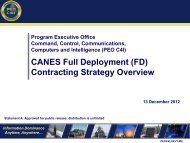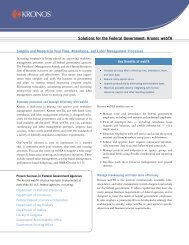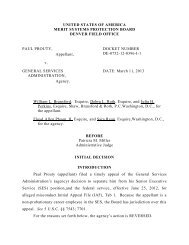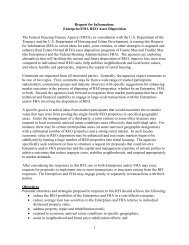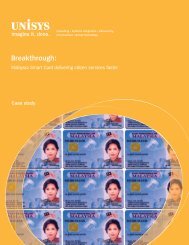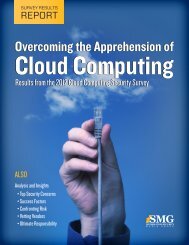Wastebook - Senator Tom Coburn - U.S. Senate
Wastebook - Senator Tom Coburn - U.S. Senate
Wastebook - Senator Tom Coburn - U.S. Senate
You also want an ePaper? Increase the reach of your titles
YUMPU automatically turns print PDFs into web optimized ePapers that Google loves.
<strong>Wastebook</strong> 2013When George W. Bush was president and Republicans held a majority in the <strong>Senate</strong> in 2005, 43percent favored eliminating the filibuster. 57Regardless of what party controlled the White House or the <strong>Senate</strong>, the public has never rallied to endthe filibuster.“There is no groundswell of support for changing the filibuster rule,” notes Peter Brown, assistantdirector of the Quinnipiac University Polling Institute. 58The point of this, however, is not to dispute the merits of the filibuster or actions of the MajorityLeader; rather, it is to debate the necessity to spend federal funds to gauge Americans attitudestowards the parliamentary procedure.The Obama Administration, which supported the move to end the filibuster, 59 is spending more than aquarter-of-a-million dollars out of the budget of the National Science Foundation (NSF) to study“attitudes toward the <strong>Senate</strong> filibuster among the American public.” 60Researchers at Washington University in St. Louis received a $251,525 NSF grant for the project,which is now in its fourth year. 61According to NSF, “this research examines public attitudes about majority rule and minority rights inthe United States. It does so by focusing on public views about prominent legislative battles involvingthe <strong>Senate</strong> filibuster - extended debate intended to prevent a vote. The <strong>Senate</strong>’s cloture rule providesthat a three-fifths majority of elected senators is required to close debate and move to a vote on amotion, a rule that allows a large minority to prevent majority action. This study exploits an existingsurvey panel to assess the public’s views of majority rule and minority rights both in the abstract andin response to major legislative episodes. The study examines the effect of abstract views of majorityrule, minority rights, and the filibuster, policy preferences, party preferences and other factors such aspolitical sophistication and education on evaluations of legislative outcomes involving thefilibuster.” 62The filibuster has already been surveyed at length by public opinion polls going back to the 1930s.Gallup first looked at Americans’ attitudes in 1937, when President Roosevelt sought to pack theSupreme Court and opponents filibustered the change in the <strong>Senate</strong>. 63 CNN, CBS News, Quinnipiac,National Journal, The New York Times and others have all sponsored independent surveys of the public’sattitude toward the filibuster. 64NSF notes the findings of its study “will be reflected in on the investigator’s textbook on congressionalpolitics, which is one of the most widely-read textbooks by undergraduates on the subject.” 65Regardless of whether or not the government’s findings reflect the decades of polls taken withoutfederal funds, all of these opinions may already be irrelevant. The right to filibuster nominations haslargely been dismantled without the backing of public opinion and both the Majority Leader andPresident have left open the possibility of eliminating the legislative filibuster in the future. 66It is difficult to justify funding this politically motivated project while cutting off federal support forhundreds of scientific proposals. NSF announced earlier this year that a result of sequestration “thetotal number of new research grants will be reduced.” 67 Approximately 600 new NSF grants were notfunded. 68 But the filibuster research project continues to go on and on just like a real filibuster, whichjust happened to be partially eliminated.10



